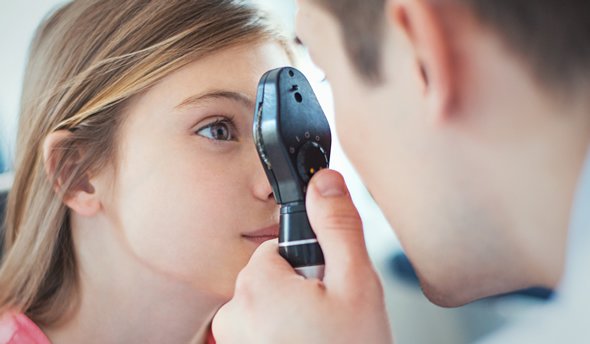Youth with diabetes need vision loss screening
Diabetes can lead to blindness, but children and teens with diabetes may not receive recommended eye exams in the years following their diagnosis, a U.S. study suggests.
Researchers found that just 65 percent of youth with type 1 diabetes and 42 per cent of those with type 2 diabetes had vision-loss screening within six years of their diabetes diagnosis.
“More youth now than ever are being diagnosed with diabetes. By 2050, the prevalence with type 1 will triple and the prevalence with type 2 will quadruple, with the greatest increase in minority populations,” said lead study author Dr. Sophia Wang of the University of Michigan Medical School in Ann Arbor.
The American Academy of Ophthalmology recommends screening for diabetic retinopathy five years after an initial diabetes diagnosis for youth with type 1 diabetes while the American Diabetes Association and the American Academy of Pediatrics recommend screening within three to five years. For kids with type 2 diabetes, screening is recommended at diagnosis.
Diabetic retinopathy is a complication of diabetes that may not have symptoms in early stages but can progress to vision loss. The damage to the retina of the eye results from damage to tiny blood vessels that affect other parts of the body as well.
About half of people with retinopathy develop diabetic macular edema, a fluid build-up in the retina, or glaucoma.
“Diabetic retinopathy is the number one cause of vision loss in ages 20-74, so screening is an important component of diabetes care,” Dr. Wang told Reuters Health by email.
To see how many kids with diabetes are getting the recommended screening, Dr. Wang and colleagues analyzed data from a national managed care network, which included more than 5,400 youth under age 21 with type 1 diabetes and 7,200 with type 2 diabetes.
Overall, researchers found that about 4,000 kids, or 31 per cent, had an eye exam.
 |
Those with type 1 diabetes were more likely to have had an eye exam compared with those who had type 2 diabetes, the study team reports in JAMA Ophthalmology. White and Asian youth were more likely to have had exams than black and Latino youth. Those with a higher household net worth were also more likely to receive an eye exam compared with those in lower-income households.
“Despite the fact that all the youth in our study possessed health insurance, we found disparities by race and family affluence, suggesting that they may be particularly at risk,” Dr. Wang said.
In the study, 11 per cent of black children and teens and 18 per cent of Latino youth were less likely to undergo an eye exam compared to white kids. Younger patients were also less likely to receive an exam than older ones.
“We must educate adolescents and caregivers on the importance of screening to improve care coordination between different medical specialists such as pediatricians, endocrinologists, ophthalmologists and optometrists,” said study author Dr. Joshua Stein of the University of Michigan Kellogg Eye Center in Ann Arbor.
“More research is needed on new technologies which might render ophthalmic screening more accessible, such as retinal photography performed in primary care physicians’ clinics,” he told Reuters Health by email.
Diabetic retinopathy is considered the most common micro vascular complication of diabetes and is projected to grow at an alarming rate, said Dr. Seema Garg of the University of North Carolina at Chapel Hill, who wrote a commentary accompanying the study.
“Visual impairment is detrimental to patients’ personal independence, economic productivity, employment and overall quality of life,” she told Reuters Health by email. “The opportunity costs of a lifetime of blindness are enormous.”
Socioeconomics, geographical barriers, delayed referrals from primary care doctors, language barriers and cultural barriers also play a part in the screening gap. Retina screening via telemedicine could help address the issue, especially for racial minorities and economically disadvantaged youth, Dr. Garg writes in the commentary.
“Telemedicine is an emerging strategy for improving screening with remote expert interpretation,” she writes. “Telemedicine is effective in reaching underserved populations in remote, rural or urban settings where patients may be at risk for more advanced disease.”
VNF/Reuters
Recommended
 Handbook
Handbook
Vietnam Moves Up 8 Places In World Happiness Index
 Handbook
Handbook
Travelling Vietnam Through French Artist's Children Book
 Multimedia
Multimedia
Vietnamese Turmeric Fish among Best Asian Dishes: TasteAtlas
 Handbook
Handbook
From Lost to Found: German Tourist Thanks Vietnamese Police for Returning His Bag
 Handbook
Handbook
Prediction and Resolution for the Disasters of Humanity
 Handbook
Handbook
16 French Films To Be Shown For Free During Tet Holiday In Vietnam
 Handbook
Handbook
Unique Cultural and Religious Activities to Welcome Year of the Snake
 Handbook
Handbook
